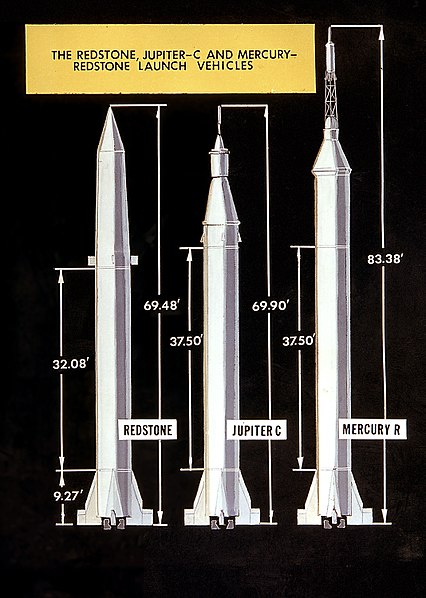Mercury-Redstone 1 (MR-1) was the first Mercury-Redstone uncrewed flight test in Project Mercury and the first attempt to launch a Mercury spacecraft with the Mercury-Redstone Launch Vehicle. Intended to be an uncrewed sub-orbital spaceflight, it was launched on November 21, 1960 from Cape Canaveral Air Force Station, Florida. The launch failed in an abnormal fashion: immediately after the Mercury-Redstone rocket started to move, it shut itself down and settled back on the pad, after which the capsule jettisoned its escape rocket and deployed its recovery parachutes. The failure has been referred to as the "four-inch flight", for the approximate distance traveled by the launch vehicle.
MR-1 launching the escape rocket.
Fueling MR-1 in preparation for launch.
MR-1 at the moment of ignition.
Mercury spacecraft #2 in an unfinished state at Lewis Hangar in 1959.
Mercury-Redstone Launch Vehicle
The Mercury-Redstone Launch Vehicle, designed for NASA's Project Mercury, was the first American crewed space booster. It was used for six sub-orbital Mercury flights from 1960–1961; culminating with the launch of the first, and 11 weeks later, the second American in space. The four subsequent Mercury human spaceflights used the more powerful Atlas booster to enter low Earth orbit.
Mercury-Redstone 2 launch carrying Ham, a chimpanzee, on 31 January 1961.
Comparison of Mercury-Redstone (right) with Redstone missile and Jupiter-C
Mercury-Redstone prior to test-firing in the Redstone Test Stand at Marshall Space Flight Center, Alabama
MSFC Mercury-Redstone Project Manager Joachim Kuettner (l) and center officials host MR-4 astronaut Gus Grissom (6th from l).








